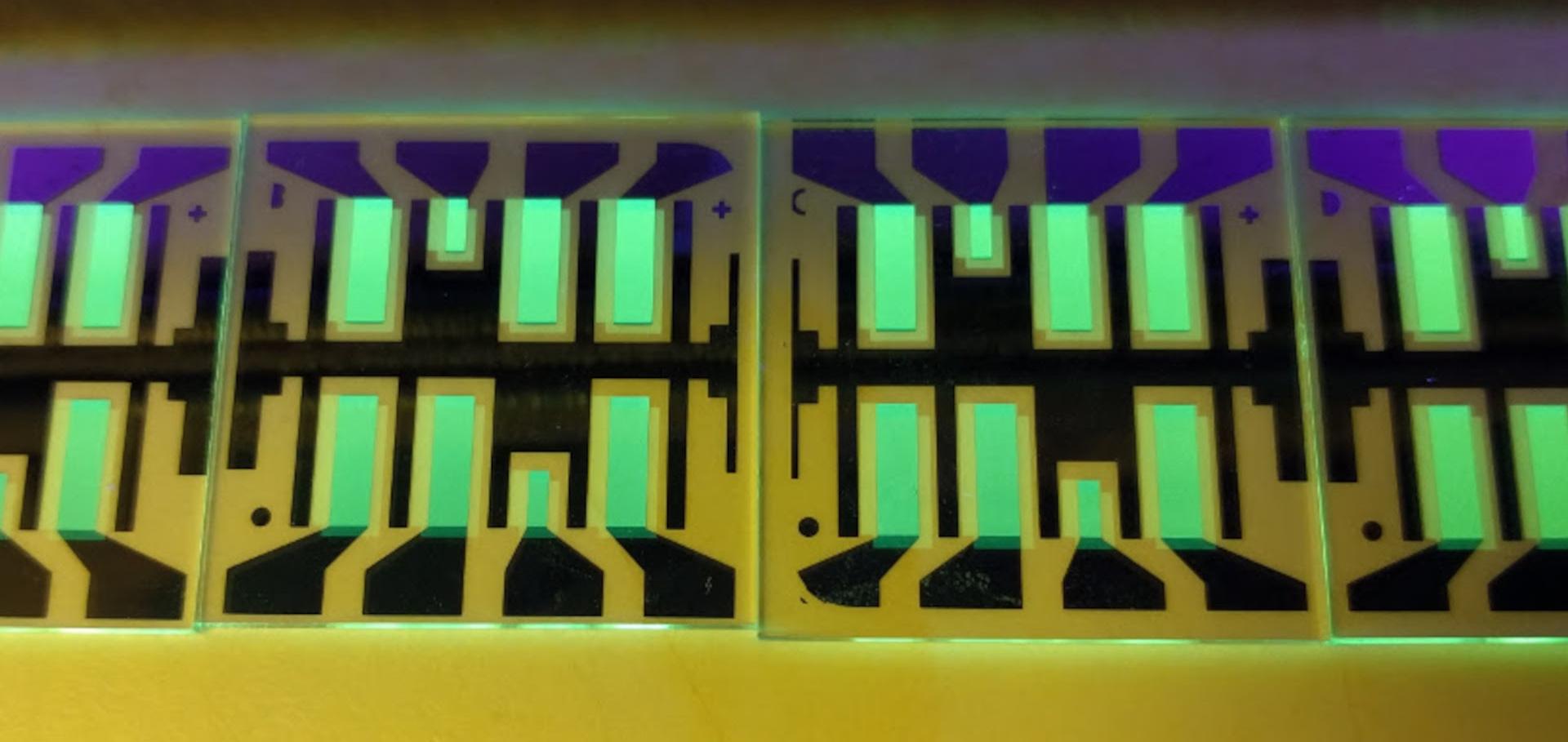Assessing the Photovoltaic Quality of Vacuum-Thermal Evaporated Organic Semiconductor Blends.
Advanced materials (Deerfield Beach, Fla.) Wiley (2021) ARTN 2107584
Abstract:
Vacuum-thermal evaporation (VTE) is a highly relevant fabrication route for organic solar cells (OSCs), especially on an industrial scale as proven by the commercialisation of organic light emitting diode (OLED) based displays. While OSC performance is reported for a range of VTE-deposited molecules, a comprehensive assessment of donor:acceptor blend properties with respect to their photovoltaic performance is scarce. Here, we fabricate organic thin films and solar cells of three select systems and measure ellipsometry, external quantum efficiency with high dynamic range, as well as OTRACE to quantify absorption, voltage losses, and charge carrier mobility. These parameters are key to explain OSC performance and will help to rationalize the performance of other material systems reported in literature as our methodology is applicable beyond VTE systems. Furthermore, it could help to judge the prospects of new molecules in general. We find large differences in the measured values and find that today's VTE OSCs can reach high extinction coefficients, but only moderate mobility and voltage loss compared to their solution-processed counterparts. We outline what needs to improve for VTE organic solar cells to again catch up with their solution-processed counterparts in terms of power conversion efficiency. This article is protected by copyright. All rights reserved.A liquid-crystalline non-fullerene acceptor enabling high-performance organic solar cells
JOURNAL OF MATERIALS CHEMISTRY A (2021)
Combining optical and magnetic resonance spectroscopies to probe charge recombination via triplet excitons in organic solar cells
(2021)
The role of charge recombination to triplet excitons in organic solar cells
Nature Springer Nature 597:7878 (2021) 666-671
Abstract:
The use of non-fullerene acceptors (NFAs) in organic solar cells has led to power conversion efficiencies as high as 18%<sup>1</sup>. However, organic solar cells are still less efficient than inorganic solar cells, which typically have power conversion efficiencies of more than 20%<sup>2</sup>. A key reason for this difference is that organic solar cells have low open-circuit voltages relative to their optical bandgaps<sup>3</sup>, owing to non-radiative recombination<sup>4</sup>. For organic solar cells to compete with inorganic solar cells in terms of efficiency, non-radiative loss pathways must be identified and suppressed. Here we show that in most organic solar cells that use NFAs, the majority of charge recombination under open-circuit conditions proceeds via the formation of non-emissive NFA triplet excitons; in the benchmark PM6:Y6 blend<sup>5</sup>, this fraction reaches 90%, reducing the open-circuit voltage by 60 mV. We prevent recombination via this non-radiative channel by engineering substantial hybridization between the NFA triplet excitons and the spin-triplet charge-transfer excitons. Modelling suggests that the rate of back charge transfer from spin-triplet charge-transfer excitons to molecular triplet excitons may be reduced by an order of magnitude, enabling re-dissociation of the spin-triplet charge-transfer exciton. We demonstrate NFA systems in which the formation of triplet excitons is suppressed. This work thus provides a design pathway for organic solar cells with power conversion efficiencies of 20% or more.Organic Electronics and Beyond
ADVANCED OPTICAL MATERIALS 9:14 (2021) ARTN 2101108


